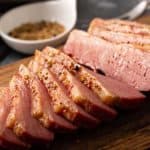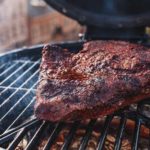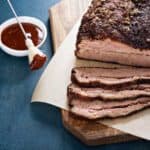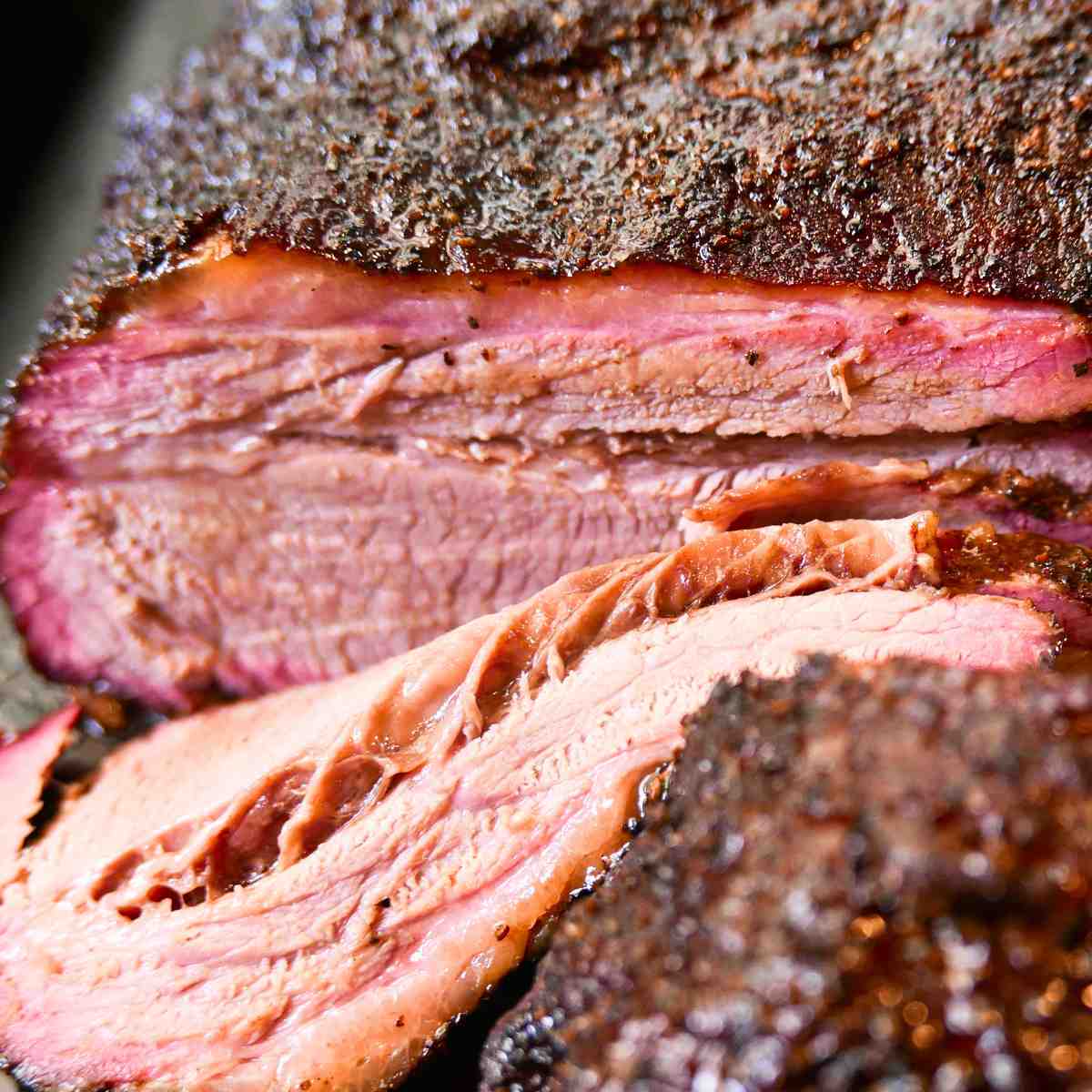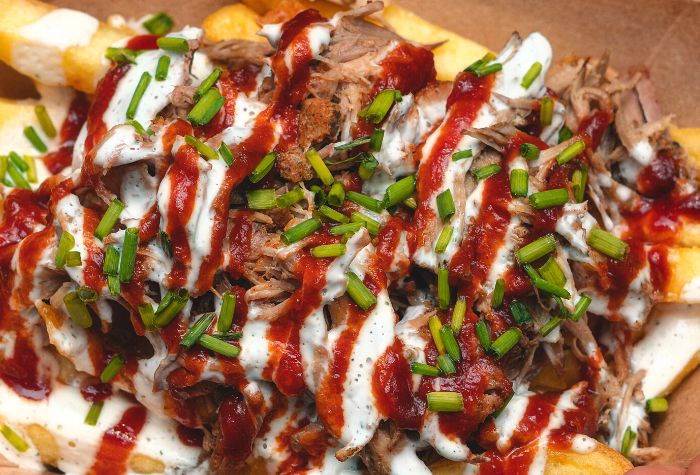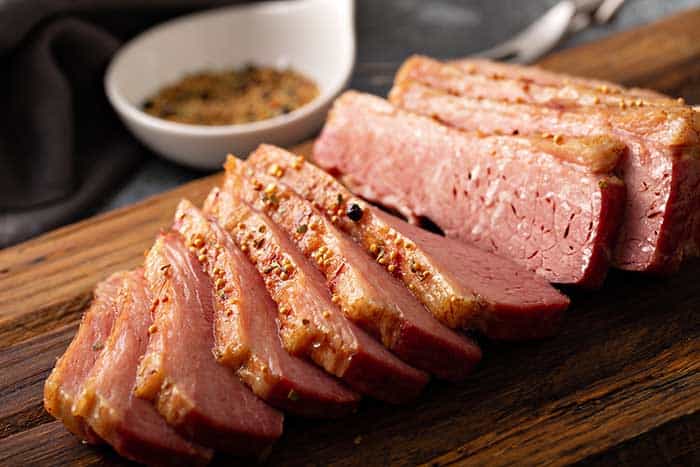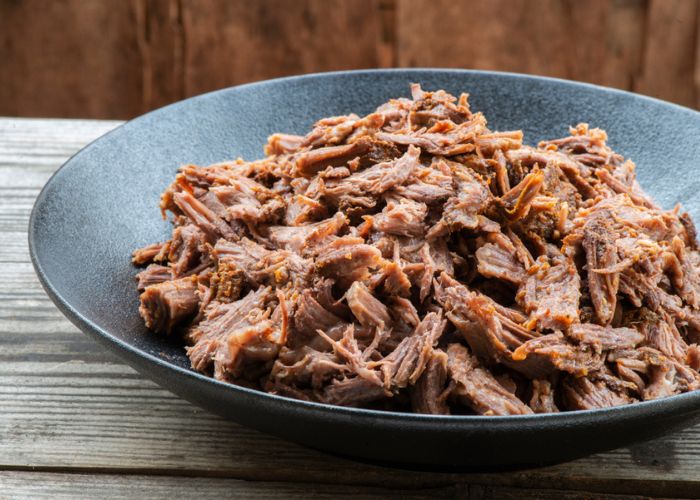What is the brisket stall, and why does it happen? We unpack the science behind this phenomenon in BBQ cooking and help you beat it.
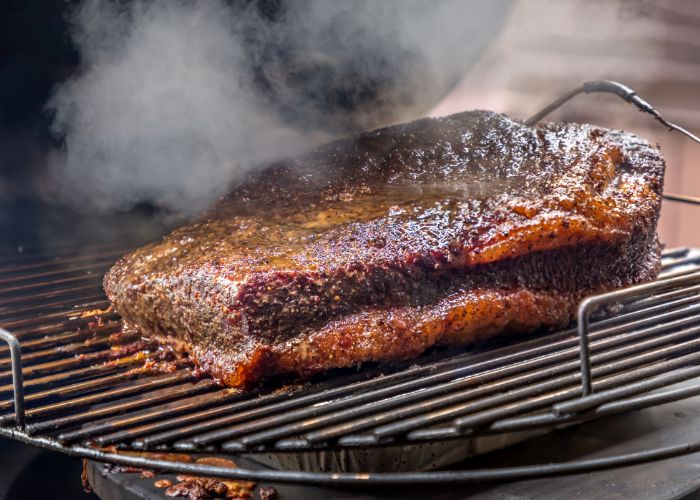
There is bound to be a moment when you are smoking your first (or even second or third) brisket when you think: what the heck is going on?
You’ve done everything correctly. The temperature in the smoker has been consistent. The amount of smoke is just right. And your brisket is starting to develop a gorgeous bark. So far, so good, right? Except… you’ve also been monitoring the brisket’s internal temperature (as you should), and you’ve noticed that after a steady rise, it has been lurking around the 150°F (65°C) mark for over an hour.
Welcome, my friend, to The Stall. This temporary plateau in the internal temperature of the brisket, which can last several hours, is, in fact, a perfectly natural part of the low-and-slow cooking process.
Let’s take a look at the causes of this frustrating plateau and what you can do to beat it.
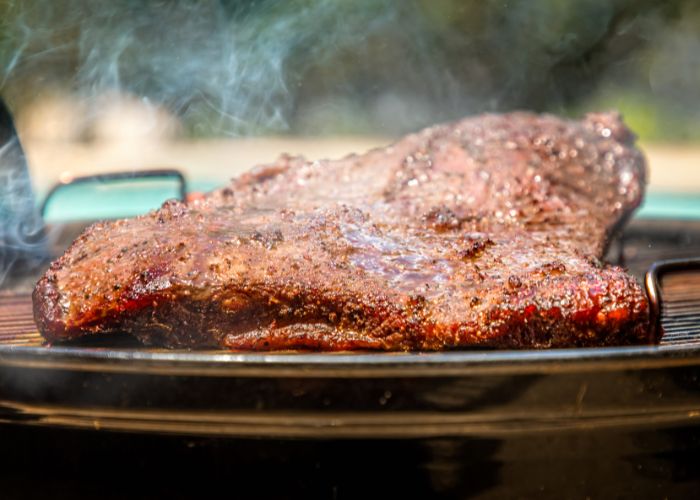
What is the Brisket Stall?
The Stall is a phenomenon where large cuts of meat, like brisket, that are smoked at low temperatures hit a point where their internal temperature hits around 150°F (65°C) and appears to stop rising.
This happens because moisture sweats from the meat and cools it at a greater or similar rate than the ambient temperature in the smoker heats it. These two opposing forces then reach an impasse, where the internal temperature of the brisket stalls.
It’s a process that’s actually seen in many large meat cuts, including chuck roast and pork butt, but it is particularly common with smoked beef brisket.
To beat the brisket stall, we can employ the use of some aluminum foil or butcher paper to wrap the brisket. This should help slow the rate at which moisture evaporates from the meat. But first, a quick science lesson…
The Science Behind the Stall
Also known as the plateau phase, The Stall is a temporary slowdown of the increase in the brisket’s internal temperature during the smoking process. Several factors contribute to this plateau, but the main reason for the BBQ stall seems to be evaporative cooling.
As the meat’s internal temperature rises from smoking, the moisture inside the meat starts to evaporate at an increasing rate. This evaporation acts like a cooling system (much like how sweat cools you down during exercise), which offsets the heat generated by your smoker to the point where the internal temperature of the meat can’t rise anymore. Hence: The Stall.
What else is going on? Well, as the brisket is slowly heated, the structure of the proteins within the muscle fibers begins to change. This process, known as denaturation, plays a pivotal role in tenderizing the meat and enhancing its flavor. However, denaturation also requires energy. As the proteins absorb heat as a form of energy, the overall temperature of the meat rises more slowly.
During the process of protein denaturation, some proteins release water molecules. When water evaporates, it absorbs heat from the surrounding environment. This process, known as latent heat of vaporization, further contributes to the temporary internal temperature plateau. As the rate of moisture evaporation increases, it balances out the heat input from the smoker, causing a stall.
Let’s try to simplify that. The tough muscle fibers in your brisket must undergo certain structural changes to create the tender texture we want. These changes require a lot of energy, and the source of that energy is the heat from the smoker. While these structural changes are taking place, the energy is being used for this purpose rather than to heat the brisket further.
Identifying the Stall
The easiest way to identify the stall phase is to monitor the brisket’s internal temperature. As you begin the smoke, the brisket’s internal temperature will rise steadily. When this temperature stops rising – usually between 150-170°F – it clearly indicates that you have entered the stall phase. This phase may last several hours.
The exact timing of the stall phase depends on various factors, including the size and thickness of the brisket, the fat content, the smoking temperature, and the humidity level in the smoker. A larger brisket with a higher fat content will likely experience a longer stall phase than a smaller brisket with less fat. As a general guideline, you can expect the stall phase to occur between the fourth and eighth hours of smoking for a typical packer brisket.
Other telltale signs that the brisket is in the stall phase include a change in the appearance of the surface of the brisket, where it may appear more leathery or matte-like.
Another sure sign is you’ll notice more resistance when inserting your meat thermometer into the meat, and might even hear a slight squeaky sound. You might also notice smoke appearing thinner or lighter around the brisket.
Are There Benefits to the Stall?
While the stall phase may be frustrating, it is a natural part of the process when slow-smoking meat. In fact, it is during the stall phase that a lot of the magic happens. It allows the connective tissue to break down gradually, giving the final product its tender, melt-in-your-mouth quality.
It is also important that the evaporation process doesn’t happen too quickly – a risk if you choose to increase the temperature in the smoker to beat the stall – as this can result in tough and dry brisket.
Strategies to Beat the Stall
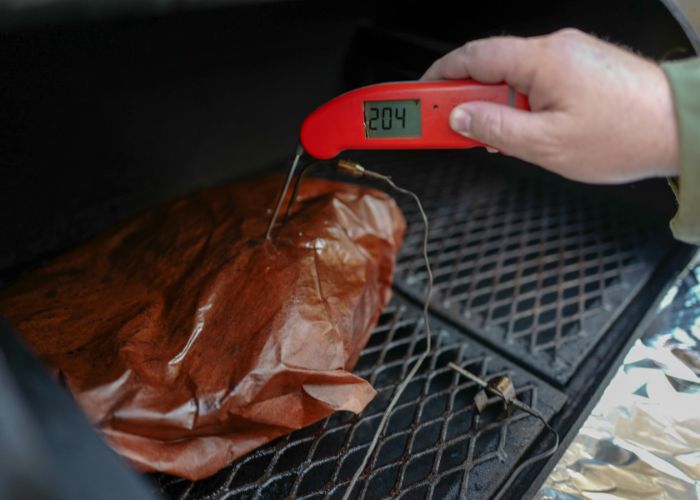
Patience is key when it comes to managing the stall phase. Try to open the smoker door as little as possible, as this will release heat and moisture, prolonging the duration of the stall phase. While it is generally worth patiently waiting out the stall, there are steps that you can take to shorten the stall phase if you are pressed for time or short on patience. There are both advantages and disadvantages to attempting to shorten this phase.
- Potential advantages: Reduced cooking time, more flavorful bark development, and possibly moisture retention if done correctly.
- Potential disadvantages: Reduced tenderness, altered flavor profile, uneven cooking, and moisture loss if done incorrectly.
Increasing the smoking temperature is the most obvious way to shorten the stall phase. Of course, this comes with the risk of increased moisture loss and the potential for chewy, dry brisket. Certain methods for smoking brisket – such as the 4-2-10 method – have an increase in smoking temperature at the four-hour mark when the stall typically begins.
However, it is important to note that, at this point, the 4-2-10 method also recommends wrapping the brisket in foil or butcher paper to reduce moisture loss and promote even cooking. Many popular methods for smoking brisket – such as the Texas Crutch or Aaron Franklin’s method – involve wrapping the brisket in foil or butcher paper after the bark has formed. Whether you use foil or butcher paper depends on personal preference. Aluminum foil traps more moisture, while butcher paper allows more smoke penetration.
Another strategy for shortening the stall phase is to increase humidity in the smoker chamber. You can do this by using a water pan or regularly spritzing the brisket.
Increasing the humidity will decrease the rate of moisture evaporation from the meat. As the rate of moisture evaporation decreases, the amount of heat required to convert the liquid into water vapor (the latent heat of vaporization) is also reduced. As less heat is absorbed from the smoker for this purpose, more heat is available to raise the brisket’s internal temperature.
However, it is important to strike the right balance because excessive humidity can lead to soggy bark formation and affect the overall flavor of your smoked brisket.
